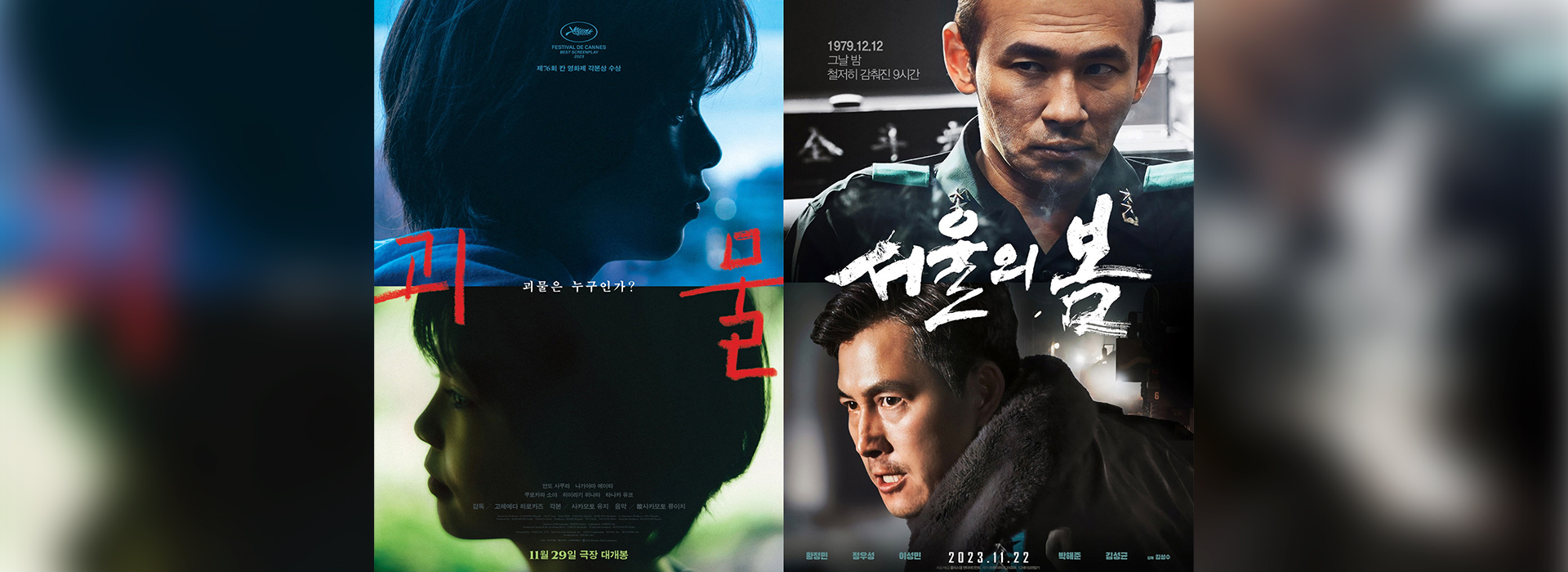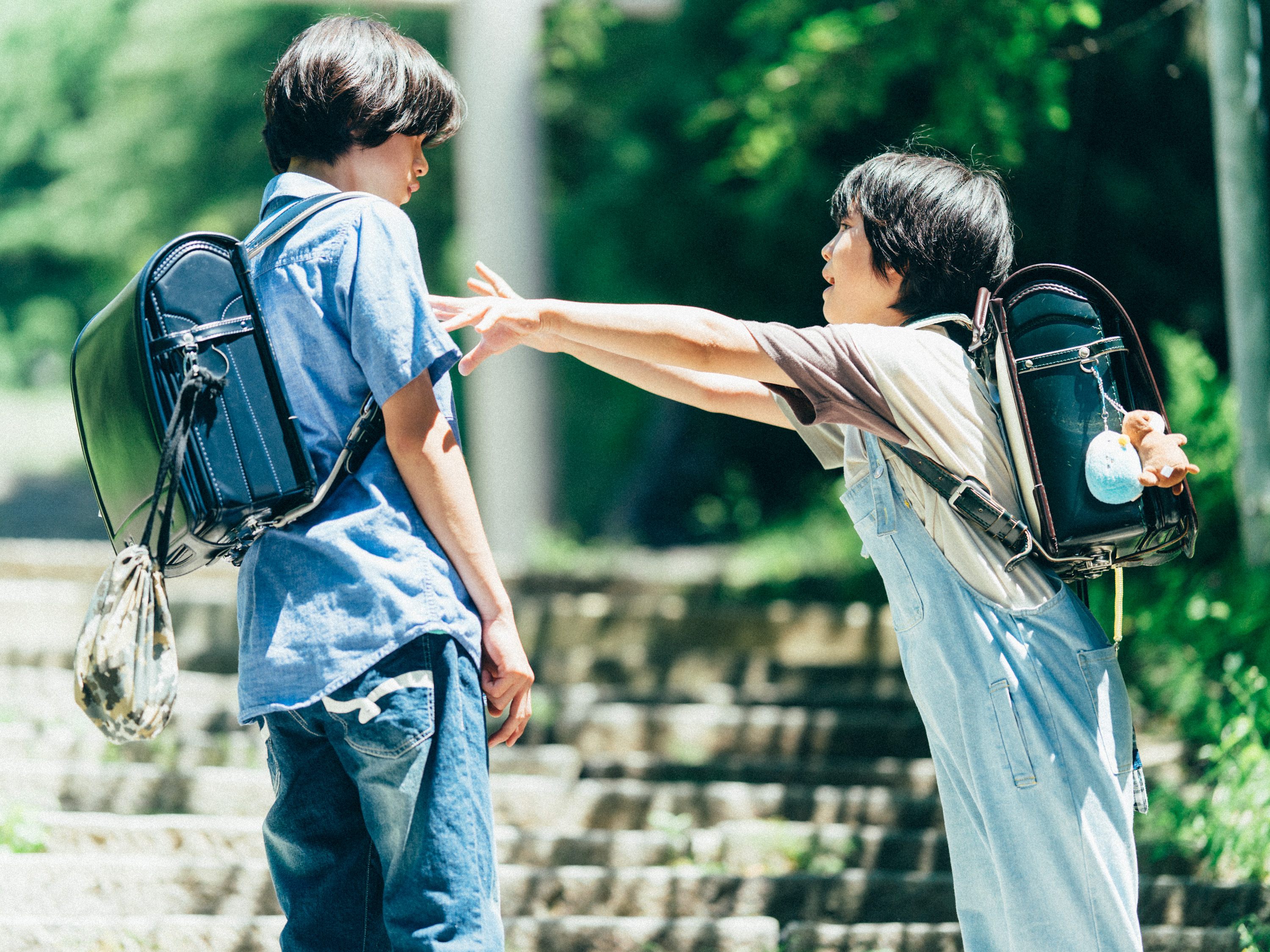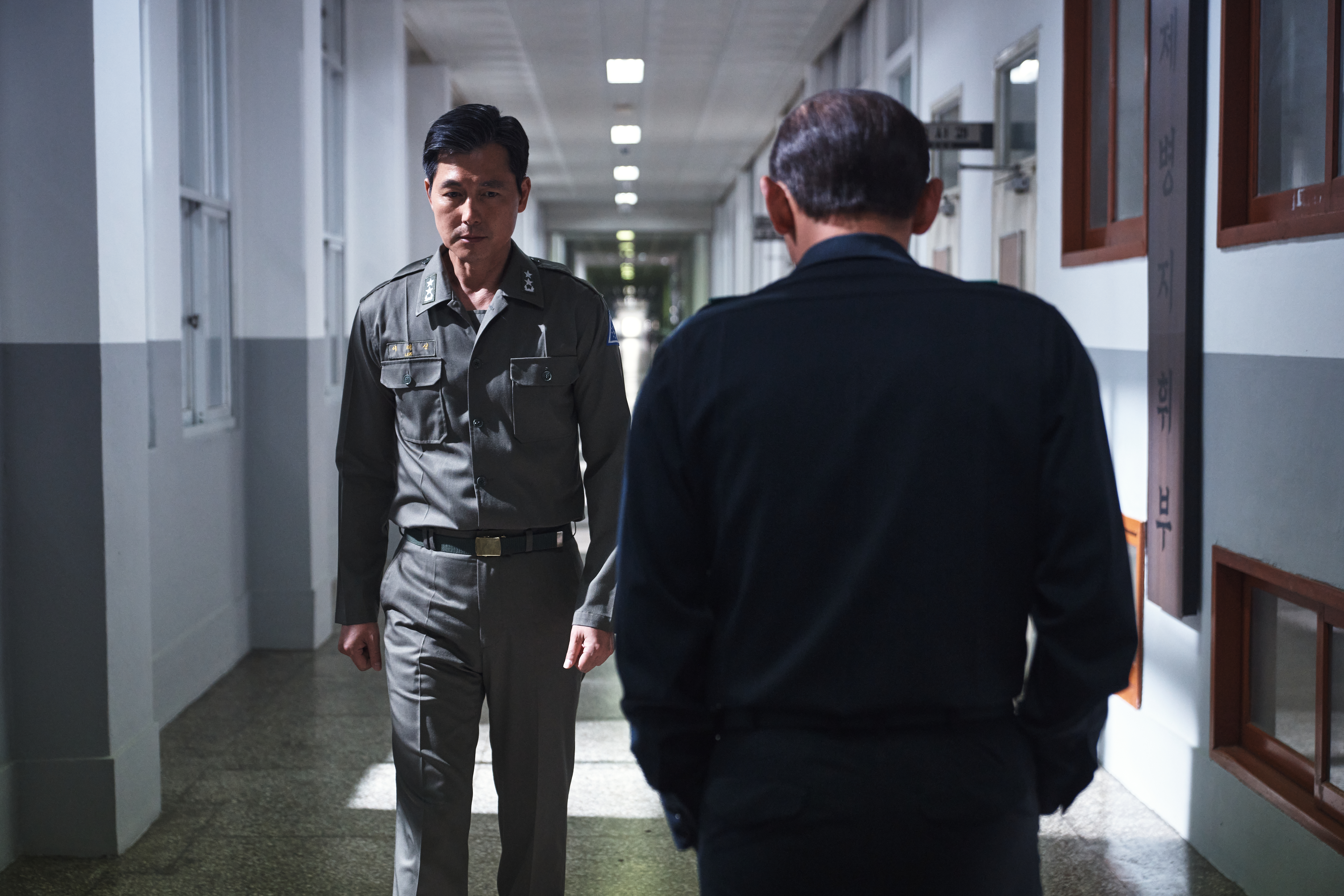
-
 ©️ NEW
©️ NEW
In the simplest sense, the one thing that keeps the characters in Monster going is love. Saori (Sakura Ando) loves her son Minato (Soya Kurokawa) with all her heart; a teacher named Hori (Eita Nagayama) loves his students; the boy Minato loves his friend Yori (Hinata Hiiragi). And yet they all end up in great pain and at the end of their ropes. Where did things go so wrong? The film, written by screenwriter Yuji Sakamoto, borrows the repeat sign from musical notation, showing the same series of events three times from the perspectives of three different characters: Saori in part one, Hori in part two, and Minato and Yori in part three. All three parts open with a building on fire, and all end with a torrential downpour, but each subsequent retelling shows more of what happens after the rain.
Saori is a widow who supports her family by working at a laundromat. She starts to pick up strange signs coming from her sweet son, Minato, who’s in fifth grade: He comes home wearing only one shoe, gives himself a shoddy haircut, and even jumps from a moving vehicle, injuring himself. He also asks her bizarre questions like if he has a pig’s brain. That conversation leads Saori to suspect that a teacher named Hori is abusing her son, and she marches down to the school demanding answers. At the school, Hori initially apologizes in a roundabout way, until he blurts out that Minato is actually a bully. Shocked, Saori finds Yori, the boy that her son is supposedly bullying, and uses his version of events to refute the teacher’s accusations and have him suspended. In part two, we see things from the perspective of Hori, a peace-loving teacher with sincere affection for his students. The only thing unusual about the man is his lack of patience for typos, but other people tell him he’s scary when he laughs and that he makes people uncomfortable and would be better off not trying to help with anything. His real flaw, however, is that he resorts to physical force instead of words when it comes to disciplining, which is where the misunderstandings stem from. After being suspended, Hori mindlessly leafs through writing assignments from his classes, and discovers that Minato and Yori were withholding some information from him, at which point he rushes off through the pouring rain and over to where Saori lives. In part three, we learn that, while the adults are busy sussing out the details of this situation, 11-year-old Minato and his schoolmate Yori have learned to rely on one another and become quite enamored with each other as well. Though the two fear their puzzling feelings could mean they bear the mark of a monster, they nonetheless live in a world of their own making, spending time together in an abandoned train in the woods. It’s reminiscent of Giovanni and Campanella’s time together in Kenji Miyazawa’s fairy tale Night on the Galactic Railroad (which is the first thing director Hirokazu Kore-eda says he thought of when he read the script).
Many have drawn parallels between the structure of Monster and director Akira Kurosawa’s classic Rashomon, but it’s not a fair comparison. To begin with, there’s one definitive version of events in Monster—there is no subjectivity here to change what happened. Granted, the reality of the situation is large and unwieldy, and everyone has a sort of tunnel vision that prevents them from seeing the whole picture and leads to misunderstanding, but unlike Rashomon, the characters show consistency throughout all three parts. So why is Monster split into parts at all?
Another movie that Monster was compared with when it premiered at the Cannes Film Festival earlier this year in May was Close, a film directed by Lukas Dhont that had been screened at Cannes a year earlier. Close depicts the turbulent, intimate relationship between two preteen boys as they deal with the heteronormative views in the mainstream. Most crucial among the many differences between these two films is that where Close takes a close look at two boys, Monster is more interested in what unfolds because of their secret, seeking to depict how fear of persecution leads to secrets and lies, which in turn have an effect on people beyond those directly involved—like ink as it irrevocably diffuses through water. Judging by some of the other works from Yuji Sakamoto that have made their way to Korea—MOTHER; Still, Life Goes On; The Best Divorce—the writer seems to believe characters are defined by their relationships with others. Monster’s three-part structure creates an optical illusion where the pain that other characters suffer in the surrounding confusion is given as much weight as what the two boys are going through. The division also serves to suggest that there exists an almost unbridgeable gap between the worlds of people living different lives, like mother and son, or teacher and parent. It’s just this sort of disconnect that creates the vague atmosphere of sci-fi horror that a title like Monster would imply, despite there being nothing supernatural about the film. Notably, when Saori goes to the faculty lounge in the first part of the film, the adults parroting apologies to him come across as aliens wearing the teachers’ skins. You get the sense that they’re a representation of Japanese society: apologizing profusely without caring enough to find any real solutions.
“Monster” is a catch-all term that people who can’t handle the ever-expanding universe use to fool themselves into thinking they understand the world. That’s not news to audiences. But it’s that fear that causes us to make the same mistakes over and over. In I’ll Keep Telling Simple Stories, a series of essays written by Kore-eda, he laments the lack of imagination when it comes to the way people think about others, believing that people need to at least try to understand what’s unfamiliar to them, even if it scares them.
There’s a fine line between human and inhuman, and Monster draws it for us frequently: A teacher with seniority over Hori calls overbearing parents monsters; Saori snaps at the principal that he is practically inhuman. Yori’s father uses the pronoun “it” when talking about his son, and talks about needing to make him human like it’s nothing, lashing out and calling him a pig-for-brains and other insensitive terms. His words go beyond merely making Yori and Minato feel guilty—it spreads to their classmates, giving them ammunition with which to bully Yori. The monster in the movie hangs in the air all around, diffused. The way Saori and Hori are pressured into jumping to conclusions, and Minato and Yori to tell lies, really derives from shouts and whispers within a crowd, where pinpointing the true origin becomes impossible. Some are outlandish accusations, like Hori shoving somehow, while others are the kind of language that flows freely in a heteronormative society, like questioning why someone isn’t acting like a man, and wanting nothing more for children than to get married and start a typical family. The comments pile up one by one from people who never question whether they might be the abnormal ones, instilling boys who are barely 11 years old with the pessimistic view that they’ll never be happy in this life and causing them to be increasingly obsessed with the idea of reincarnation. But in the words that Yuji Sakamoto works so hard to impress upon us, we have to be happy with the life we have.
-
 ©️ Plus M Entertainment
©️ Plus M Entertainment
It’s a lot easier to identify the monster in director Kim Sung-soo’s latest film, 12.12: The Day, based on the military coup that overthrew the South Korean government on December 12, 1979: Chun Doo-gwang (Hwang Jung-min), the military leader who led the mutiny, stands at the center of the story. Hwang’s Chun Doo-gwang gives off an air similar to Ian McKellen’s portrayal of the titular character in the 1995 version of Shakespeare’s Richard III. The real Chun Doo-hwan, on whom Hwang’s character is based, left a much duller, heartless impression on the people of the nation. Like Richard III, the fictional Chun is hunched over menacingly and spits his moral posturing in people’s faces like so much phlegm in his effort to seize power. He brings the “winter of discontent” to a violent end with his unquenchable thirst for power and strangles the spring of democracy. At first I wondered what made Hwang such a dead ringer for the real-life Chun Doo-hwan despite looking nothing like him. I realized that, first of all, his big, round, bald head brings to mind the dictator’s TV propaganda of the time, and secondly, the lighting choices made for the film give it an expressionist bent. Despite being a war movie of sorts, 12.12: The Day takes place mainly indoors, and has Hwang almost constantly cast in ominous shadows or casting a long shadow himself, wringing dark images of the dictator from the Korean collective consciousness.
Put simply, Chun Doo-gwang is a dark character. In the scene where he calls the Hanahoe (Group of One) officers to his home to reveal his plans for a coup, he turns out the lights and speaks from the dark. The scene where he calls one of his juniors into a darkened room and sits him down on a chair in his office is almost like something out of a German expressionist vampire film. He speaks as a fascist does to the man, telling him that the man is Chun as Chun too is the man, thus erasing his junior’s identity for the sake of the whole (here, the Hanahoe) with hypnotic rhetoric (in fact, one of the rules of the Hanahoe included a bizarre clause that threatens a form of personality annihilation in the event of betrayal). Capital Security Commander Lee Tae-shin (Jung Woo Sung), modeled after General Jang Tae-wan, does everything in his power to keep the rebel forces at bay despite his losing position, but is less a perfect adaptation of the real-life figure and more the foil to the Chun Doo-gwang character. A pet favorite of the director since working together on Beat, Jung Woo Sung takes to his role in 12.12 like a cross between Zhao Yun and Zhang Fei from Records of the Three Kingdoms, blocking tanks on Haengju Bridge and crossing barricades alone. The longer he stands alone, and the more superhuman he appears, the more audiences come to see his defeat as a defeat for us all—even without having to go home and learn through research how fighters on both sides ended up as political figures.
Through a fairly detailed recreation of the nine fateful hours on December 12, the film reiterates that what occurred was only possible because the soldiers were more loyal to Hanahoe than to Chun or the Korean people. In the end, the monster 12.12: The Day depicts is the organization that believed the definition of public good is whatever benefitted their own group, ultimately using the power entrusted to them by the people against the nation’s own military and citizens.
The scene in 12.12: The Day where the two armed sides have an explosive face-off on Sejong-ro is a moment of creative license. In real life, Jang Tae-wan, the Capital Security Commander who served as the model for Lee Tae-shin, was arrested when one of his subordinates betrayed him. I realized something while watching the historically inaccurate fighting in the street: It wasn’t the alternative history we desperately wish were true where democracy triumphs, like when Hitler is killed off in Inglourious Basterds. What we really wanted to see was an appropriately insulting depiction of a dictator who wantonly massacred people and never showed remorse. What we get in the movie was what we never got in real life: a brief flash of shame and humiliation across Chun’s face.
Unauthorized reproduction and distribution prohibited.